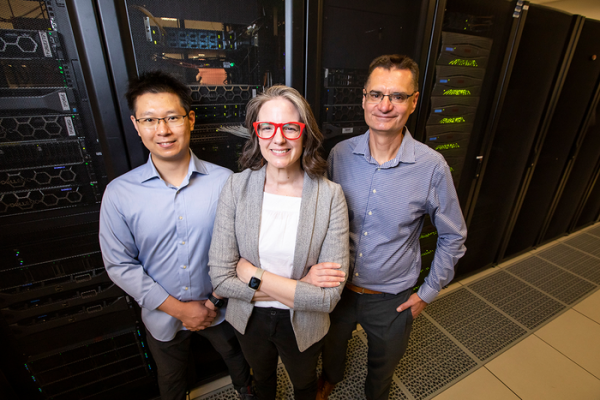In the fall of 2017, geology professor Patricia Gregg and her team had just set up a new volcanic forecasting modeling program on the Blue Waters and iForge supercomputers. Simultaneously, another team was monitoring activity at the Sierra Negra volcano in the Galapagos Islands, Ecuador. One of the scientists on the Ecuador project, Dennis Geist of Colgate University, contacted Gregg, and what happened next was the fortuitous forecast of the June 2018 Sierra Negra eruption five months before it occurred.
Initially developed on an iMac computer, the new modeling approach had already garnered attention for successfully recreating the unexpected eruption of Alaska’s Okmok volcano in 2008. Gregg’s team, based out of the University of Illinois Urbana-Champaign and the National Center for Supercomputing Applications, wanted to test the model’s new high-performance computing upgrade, and Geist’s Sierra Negra observations showed signs of an imminent eruption.
“Sierra Negra is a well-behaved volcano,” said Gregg, the lead author of a new report of the successful effort. “Meaning that, before eruptions in the past, the volcano has shown all the telltale signs of an eruption that we would expect to see like groundswell, gas release and increased seismic activity. This characteristic made Sierra Negra a great test case for our upgraded model.”
Read more at: University of Illinois at Urbana-Champaign
Former Illinois graduate student Yan Zhan, left, professor Patricia Gregg and research professor Seid Koric led a team that produced the fortuitous forecast of the 2018 Sierra Negra volcanic eruption five months before it occurred. (Photo Credit: Michelle Hassel)


